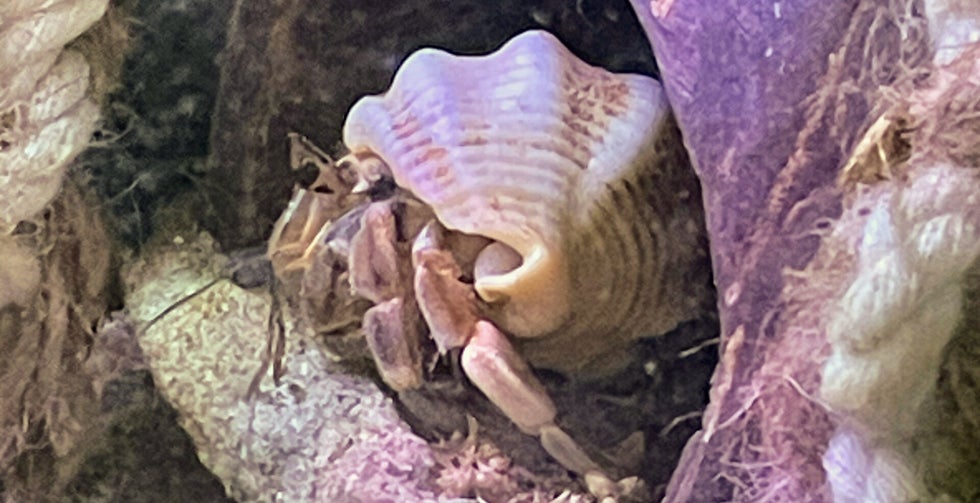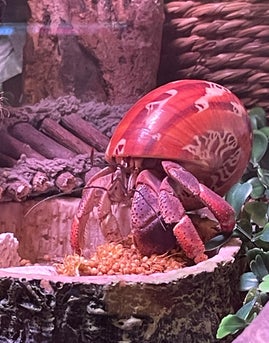
Unveiling the Social and Resourceful Creatures
Hermit crabs, often misunderstood yet endlessly fascinating creatures, captivate the imagination with their peculiar lifestyle and unique behaviors. Contrary to their name, hermit crabs are far from reclusive; rather, they thrive in the company of their own kind, forming complex social bonds that play a crucial role in their well-being.
Their most distinctive feature is their habit of residing within empty shells, which they utilize as portable homes. This remarkable behavior is a testament to their adaptability and resourcefulness in the natural world. Unlike most animals, hermit crabs do not produce their own protective covering. Instead, they rely on scavenging discarded mollusk shells to shield their soft, vulnerable abdomens.
The shell is much more than just a house—it's a symbol of safety and survival. Hermit crabs are highly selective when it comes to choosing their shells, often inspecting potential homes carefully to find the right fit. As they grow, their need for larger shells becomes essential, which can lead to competitive behavior among their peers as they trade up for roomier options. This behavior highlights not only their adaptability but also their resilience in changing environments.
Intriguingly, the process of finding the right shell is not always easy. The availability of appropriately sized shells in the wild is a major factor in the survival of hermit crab populations. In some cases, hermit crabs will even swap shells with each other in what can be described as a shell-exchange chain. This behavior is a direct response to the scarcity of suitable shells and reflects the crabs' communal instincts.
As they continue to grow, hermit crabs are faced with the constant challenge of locating a new, larger shell to accommodate their expanding bodies. Without access to larger shells, their ability to thrive is hindered, making the presence of an abundant and varied selection of shells crucial to their well-being.
While many people may assume that hermit crabs are solitary creatures due to their name, they are surprisingly social. In the wild, they live in large groups called "casts or colonies," where they engage in behaviors that promote group cohesion, such as cooperative shell exchanges and even shared burrowing activities. Living in isolation can lead to stress and a shortened lifespan, making it essential for hermit crabs in captivity to have the companionship of other crabs to mimic their natural environment.
Beyond their captivating appearance and intriguing behavior lies a crucial aspect often overlooked by new hermit crab owners: the importance of a proper habitat. Hermit crabs are sensitive creatures that require specific conditions to thrive. In the wild, they inhabit tropical coastal areas, where they benefit from consistent humidity, access to saltwater and freshwater, and natural materials for burrowing and climbing. Replicating these conditions in captivity is vital for their survival.
A well-designed habitat, or "crabitat," should include deep substrate for burrowing, a variety of climbing structures, and multiple water sources (both saltwater and freshwater). Maintaining proper humidity levels—between 75% and 85%—is critical, as hermit crabs breathe through modified gills, which require moist air. Without proper humidity, they can suffocate. Temperature is another essential factor, with an ideal range of 75-85°F (24-29°C) to mimic their tropical origins.
Hermit crabs are omnivores, meaning they require a varied diet that includes animal protein, fruits, vegetables, and calcium sources. A common mistake made by new owners is offering a diet too limited in variety, which can lead to nutritional deficiencies. In the wild, hermit crabs consume a wide range of foods, from decaying plant matter to small animals, and even ocean detritus. In captivity, it's important to replicate this diversity by offering fresh, chemical-free foods and avoiding processed or salty items.
Supplementing their diet with calcium-rich foods, such as cuttlebone or eggshells, is particularly important, as hermit crabs need calcium to support the hardening of their exoskeletons after molting.
The pet trade has unfortunately led to widespread misconceptions about hermit crabs. Often, they are sold as low-maintenance, "throwaway" pets, with minimal information provided on their complex needs. However, hermit crabs can live for decades if properly cared for, with some species living up to 40 years in the wild. This longevity makes it essential for potential owners to understand the commitment required to ensure a healthy, enriching life for their crabs.
Advocating for captive-bred hermit crabs rather than wild-caught specimens is another important step in promoting responsible care. Wild-caught hermit crabs often endure stressful and harmful conditions during capture and transportation, which can lead to a higher mortality rate. By choosing captive-bred crabs, owners can help reduce the demand for wild-caught individuals and contribute to conservation efforts.
---
On this blog, we have only scratched the surface of the complex and fascinating world of hermit crabs. From their shell-swapping antics to their social interactions, hermit crabs offer a glimpse into an extraordinary way of life. By understanding their needs and providing them with a proper habitat and varied diet, we can ensure these unique creatures thrive in captivity. Join us on this journey to learn more about how to become responsible stewards of their welfare, and let’s advocate for better care practices for these wonderful, misunderstood animals.



Add comment
Comments